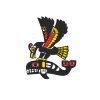Be Kind, Be Calm, Be Safe. This is the last in a three-part series honouring the Cowichan River and exploring a watershed-based perspective on public safety rooted in the Cowichan teaching that everything is interconnected, Mukw’ stem ‘o’ slhilhukw’tul.
Honouring the Cowichan River part 3: Be Safe
Our rivers rely on adequate water flows to dilute pollutants
By Jill Thompson
Before this year of upheaval, surveys of Cowichan region residents repeatedly identified safe water supplies as a leading local concern. While our focus right now must be on keeping ourselves, and the most vulnerable around us, safe in the short term, it’s inspiring to consider how well the region has done in preventing the spread of COVID-19. Could we do the same to secure our safe water? Some of the same principles apply.
At a conference on forest hydrology hosted by the Cowichan Watershed Board in 2016, Dr. John Richardson, head of the Department of Forest and Conservation Sciences at UBC, stated: “Our studies of streamside management along small streams suggest that riparian protection in the form of buffers provides benefits to maintaining the ecological functions of local and downstream parts of the stream network.”
This safe distance advice is repeated in the final report of the Koksilah Watershed Working Group’s Ecosystem-Based Assessment (Heather Pritchard and Emily Doyle-Yamaguchi, 2020). The report recommends maintaining buffers on all streams of one tall tree height to slow down water flow and stabilize stream channels, particularly in winter storms.
Wash your hands often:
Just as soap and running water washes away COVID-19 germs, our rivers rely on adequate water flows to dilute pollutants. In recent years, low water levels resulting from climate change have been creating safety issues.
For a few days in 2014, the lower Cowichan River had a coliform count more than three times the upper limit acceptable for recreational use. People were warned not to go in the water to prevent possible gastrointestinal disorders.
In 2018, the Vancouver Sun and CBC both ran stories about concerns that high concentrations of sunscreen in the upper Cowichan River’s favourite tubing locations might be the cause of reduced insect hatches, which are an essential food source for fish.
The Municipality of North Cowichan is already working to relocate the waste water outfall pipe from the Cowichan River, in part because low river flows are expected to become more frequent in the future.
COVID-19 has exposed faults in our collective life support systems. It became evident that the nation’s senior care homes were unable to keep our elders safe, and that people experiencing homelessness could not possibly follow basic public health advice. These are both, in essence, about safe “habitats” for people. The Cowichan Watershed Board advocates a whole of watershed approach, where all life is understood to be interconnected. While we learn new skills about how to manage public safety, and reduce risks to the most vulnerable in our circles of care, can we make space to reflect on that high priority for safe water, and whether local rivers aren’t also in our circle of care?
Be Kind to the River, Be Calmed by the River, Be Safe with the River (and enjoy it!)
Jill Thompson is the project coordinator for the Cowichan Watershed Board.
[Published in the Cowichan Valley Citizen Sep 13 2020. ]

 Email
Email



